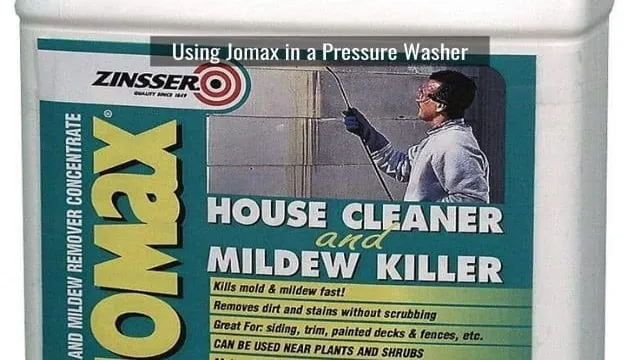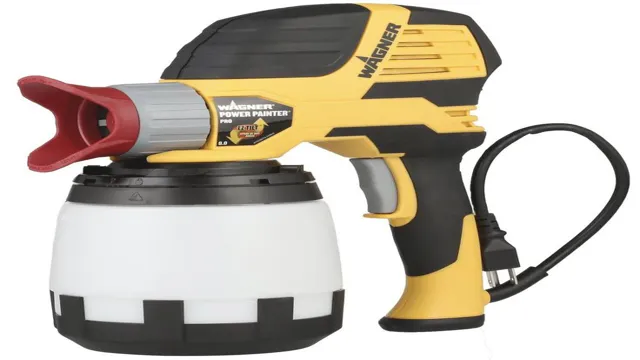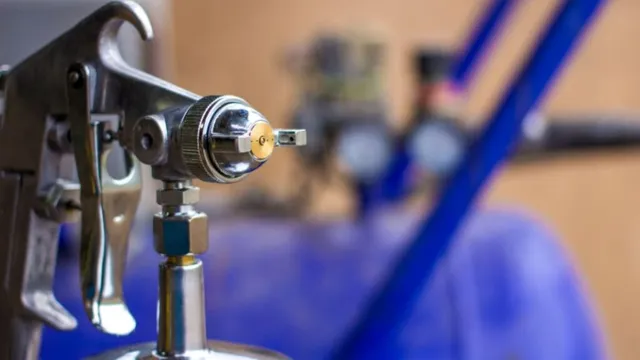Can You Use a Pressure Washer as a Paint Sprayer? Pros and Cons Explained

When it comes to painting your home’s exterior or giving those wooden fences new life, the plethora of options available can be overwhelming. One common dilemma that homeowners face is whether to use a pressure washer or a paint sprayer. Both are powerful tools that can make your painting project more efficient and effective, but which is better? Let’s explore the pros and cons of both to help you make an informed decision on which tool suits your needs.
Understanding the Difference
When it comes to painting, especially for large projects, many people wonder if they can use a pressure washer as a paint sprayer. While pressure washers and paint sprayers may appear similar, with both utilizing a handheld nozzle and pump system, there are significant differences. One of the primary differences between the two is the type of fluid they can handle.
Pressure washers are designed to use high-pressure streams of water to clean surfaces, which means they are not capable of handling thicker paints. On the other hand, paint sprayers are designed to atomize and spray paints, allowing them to handle a wide range of fluid viscosities, including thicker paints. Therefore, while a pressure washer might seem like an attractive alternative to a paint sprayer, it is not a suitable substitute, and attempting to use it for painting can result in sub-optimal results, wasted paint, and a damaged pressure washer.
Pressure Washer
Pressure washer Have you ever wondered what the difference is between a gas and electric pressure washer? Well, wonder no more! The main difference between these two types of pressure washers is their power source. Gas pressure washers are powered by gasoline and are great for heavy-duty cleaning jobs, such as removing stubborn stains and grime from large outdoor surfaces. They also tend to be more mobile than electric pressure washers, as they don’t require an electrical outlet.
On the other hand, electric pressure washers are powered by electricity and are better suited for lighter cleaning jobs, such as washing cars and outdoor furniture. They are also more eco-friendly and quieter than their gas-powered counterparts. Ultimately, the type of pressure washer you choose will depend on your specific cleaning needs and preferences.

Paint Sprayer
When it comes to painting, using a paint sprayer can save you a lot of time and effort compared to the traditional brush and roller method. However, not all paint sprayers are created equal. It’s crucial to understand the differences between the available options to ensure that you choose the one that best suits your needs.
One of the most significant differences between paint sprayers is the type of sprayer tip they use. There are two main types of tips: airless and HVLP (high volume, low pressure). Airless sprayers are more powerful and efficient, making them ideal for larger projects or thicker coatings, while HVLP sprayers are more precise and produce a finer finish, making them a better choice for smaller and more detailed work.
So whether you’re looking to tackle a big painting project or add some detail to a piece of furniture, understanding the difference between airless and HVLP sprayers will help you choose the right tool for the job.
Can You Use a Pressure Washer as a Paint Sprayer?
If you’re looking for a quick and easy way to spray paint, using a pressure washer may seem like a tempting option. However, while pressure washers do use a similar method of spraying liquid, they are not designed for painting. Pressure washers are meant to spray water and cleaning solutions to remove dirt and grime, not to apply paint.
While it is technically possible to attach a paint sprayer attachment to your pressure washer, it is not recommended as it can cause a number of issues. For one, the pressure washer may not provide the correct pressure or flow rate to properly apply the paint, resulting in an uneven finish. Additionally, the high pressure can cause the paint to atomize too much, resulting in overspray and wasted paint.
In short, while it is possible to use a pressure washer as a paint sprayer, it is not recommended or efficient. It is best to invest in a proper paint sprayer for your painting needs.
Why You Shouldn’t Use a Pressure Washer as a Paint Sprayer
Many people might think that using a pressure washer as a paint sprayer is a quick and easy solution, but it’s actually not a good idea. While both devices may seem similar in terms of their spraying capabilities, pressure washers are not designed to spray paint. In fact, attempting to use a pressure washer to apply paint can result in uneven coverage and a messy finish.
Additionally, the pressure produced by a pressure washer can be too high for delicate areas or surfaces, causing damage or even injury. Rather than risking an ineffective or dangerous DIY approach, it’s recommended to invest in a proper paint sprayer designed for the job. They may seem like a more expensive option, but in the long run, they can save you time, money, and headaches.
So, the answer to “can you use a pressure washer as a paint sprayer?” is a definite no.
Inconsistent Spray Pattern
Pressure washer, inconsistent spray pattern, paint sprayer Using a pressure washer to paint may seem like a convenient alternative to a traditional paint sprayer, but it can ultimately lead to unsatisfactory results. One of the biggest problems with using a pressure washer as a paint sprayer is its inconsistent spray pattern. Pressure washers are designed to emit a high-velocity water stream that can blast away dirt and grime, while paint sprayers are designed to deliver a consistent pattern of paint droplets.
When a pressure washer is used to paint, the spray pattern may be blotchy, uneven, and may not provide the desired coverage. In addition to the inconsistent spray pattern, it is also difficult to control the pressure and flow of paint coming from a pressure washer. This can lead to overspray, drips, and uneven coverage, leaving you with a messy and unprofessional-looking paint job.
It’s best to stick with a proper paint sprayer when it comes to achieving a smooth and consistent finish on your painting projects.
Damage to Surface
When it comes to painting surfaces, it might be tempting to use a pressure washer as a quick alternative to a paint sprayer. However, this is not recommended. Pressure washers are designed to clean surfaces by blasting water at high pressures, but they lack the precision and control required to apply paint effectively.
Additionally, the high pressure can cause damage to the surface by stripping away paint, gouging wood, or causing warping. Furthermore, the forceful spray can push paint into unintended areas, leading to uneven coverage and a messy, unsatisfactory finish. Instead of reaching for a pressure washer, stick with a paint sprayer designed specifically for the job.
Not only will it save time and effort, but it will also provide a smooth and even coat without causing damage to the surface. Remember, shortcuts may seem tempting, but using the proper tools is key for a successful paint job.
Waste of Paint
If you’re thinking about using a pressure washer as a paint sprayer, think again. Sure, it might seem like a good idea to save time and effort, but unfortunately, it’s a waste of paint. Pressure washers are designed to remove dirt and grime from surfaces with a high-velocity jet of water.
They’re not meant to spray paint onto surfaces evenly, and you’ll likely end up with a blotchy mess. Plus, pressure washers tend to use more paint than traditional paint sprayers, costing you more money in the long run. Stick to using a paint sprayer designed for that purpose, and you’ll have a better chance of achieving a flawless finish with less paint and less hassle.
Trust me, your walls (and wallet) will thank you.
Conclusion
In conclusion, while a pressure washer might have a similar functionality as a paint sprayer in terms of spraying liquids, the differences in design and efficiency make it impractical to use as a substitute. Using a pressure washer for painting would be like using a hammer to screw in a nail – sure, it might sort of work, but it won’t be pretty and it definitely won’t be efficient. So save yourself the headache and stick to the right tools for the job – your walls will thank you for it.
“
FAQs
What is a pressure washer?
A pressure washer is a machine that uses high-pressure water spray to clean surfaces.
Can a pressure washer be used as a paint sprayer?
Yes, a pressure washer can be used as a paint sprayer with the right attachment.
What attachment is needed to use a pressure washer as a paint sprayer?
A paint gun attachment is needed to use a pressure washer as a paint sprayer.
Is it safe to use a pressure washer as a paint sprayer?
Yes, it can be safe to use a pressure washer as a paint sprayer as long as you follow the manufacturer’s instructions and wear proper protective gear.
Can any type of paint be used with a pressure washer paint sprayer attachment?
No, only certain types of paint can be used with a pressure washer paint sprayer attachment. Check the manufacturer’s instructions or consult a professional before use.
How does using a pressure washer as a paint sprayer compare to using a traditional paint sprayer?
Using a pressure washer as a paint sprayer can be faster and more efficient, but may not provide the same level of precision as a traditional paint sprayer.
What are some key factors to consider when choosing to use a pressure washer as a paint sprayer?
Key factors to consider include the type of surface being painted, the type of paint being used, and the level of precision required for the job. Consult a professional if unsure.



